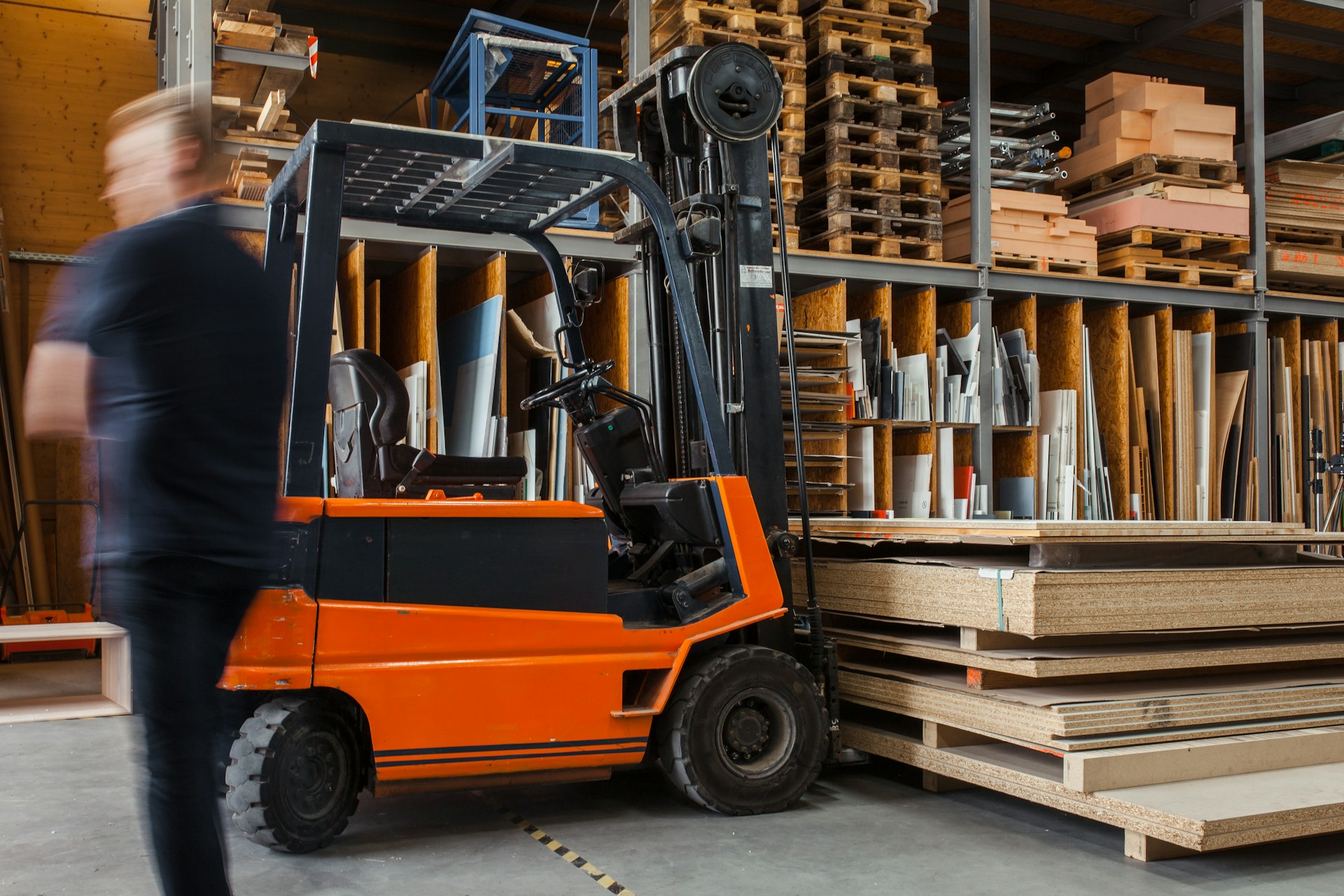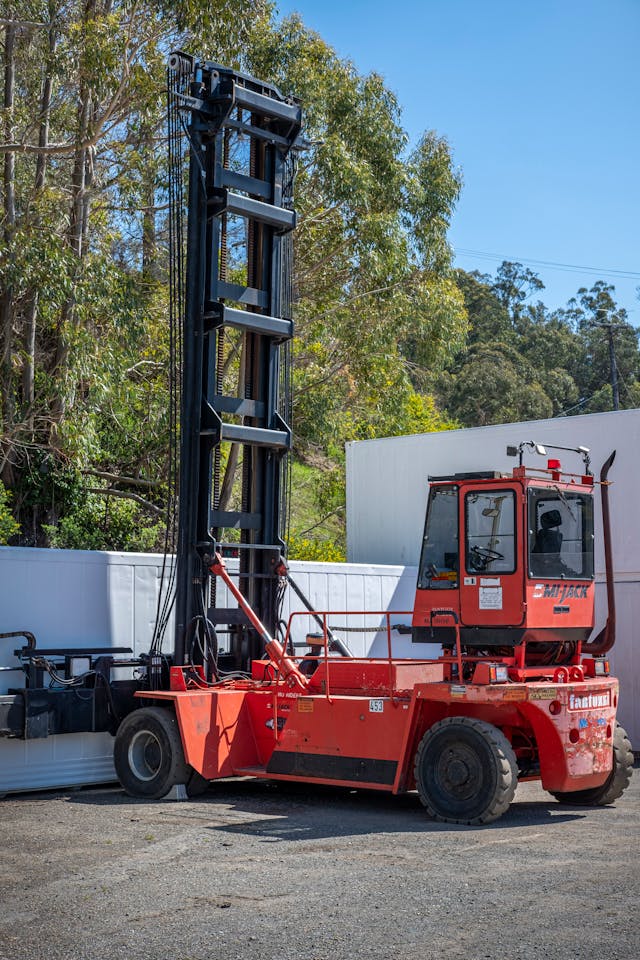The Role of Forklifts in Efficient Roofing Projects for Apartment Complexes

For efficient roofing projects in apartment complexes, precision, efficiency, and coordinated effort are demanded. Forklifts play a major part among many other tools and machinery that assist in making these projects successful. These machines which are versatile not only help increase the speed and safety of roofing operations but also enhance cost effectiveness and overall project management
In this article, we will take a look at the several ways forklifts enhance efficiency in roofing apartment complexes by focusing on their essential functions, benefits as well as best practices.
Understanding the Basics: What Are Forklifts?
Forklift Trucks or lift trucks are industrial vehicles fitted with power-operated forked platforms. Short-distance lifting and movement of materials is made possible by these machines which cannot be done without especially in the construction industry. Different types of forklifts exist depending on their size and function.
However, rough terrain forklifts, telehandlers, warehouse forklifts, etc., remain the most common ones used during roofing projects mainly in apartments.
Types of Forklifts Used in Roofing Projects
There are several types of forklifts used in roofing projects, the most common ones include:
1. Rough Terrain Forklifts
These are designed for outdoor use on uneven or rough surfaces. They are ideal for transporting heavy construction materials across sites since they can easily maneuver through difficult terrains.
2. Telehandlers
Also known as telescopic handlers, these machines have an extendable boom that assists them to reach high places hence making it easy to lift roofing materials on top.
3. Warehouse Forklifts
Though mostly used indoors, warehouse lifts also find application in roofing works as they move items within the site staging areas where material handling takes place.
Key Roles of Forklifts In Roofing Projects
Forklifts play key roles in roofing projects by efficiently transporting heavy materials, lifting supplies to elevated work areas, and ensuring smooth on-site logistics to enhance productivity and safety. Let's take a look at this in detail below:
Efficient Material Handling
One important role that forklifts play when it comes to undertaking a roof's material installation, is moving materials efficiently from one point to another within the site. Roofing materials like shingles, tiles, metal sheets, and insulation can be large and heavy.
Forklifts are used for the quick and safe movement of these items from trucks to the rooftop or storage places. This effectiveness reduces the manual labor and time that is otherwise required in handling them, ensuring their availability at the required times.
Enhancing Worker Safety
Safety in construction projects is very paramount. Forklifts highly contribute to worker safety by minimizing manual lifting and carrying of heavy materials. Reduction of strain on workers prevents injuries apart from enabling them to focus on their work without risking their health. Additionally, forklifts have stability controls or load indicators as part of their safety features making the workplace safer.
Speeding Up Project Timelines
In any construction project, time is a significant factor where delays may lead to cost escalation and eventual disruption. The process of movement of materials and tools is made easier by the use of forklifts which enhances speeding up the project timeline. With their ability to transport massive loads fast into high positions, forklifts allow roofing teams to work non-stop rather than waiting for materials delivery manually. This saves time therefore completing projects within slimmer margins.
Versatility in Material Placement
Placement of materials at specific places is often a requirement for roofing projects. Of particular interest, forklifts, especially telehandlers, are quite flexible in performing such tasks.
Telehandlers can install materials exactly where they are desired using their telescopic booms and maneuvering abilities such as putting shingles on a section of the roof or lifting tools to a certain height with their extendable booms and maneuverability. This reduces the need for additional adjustments due to precision and makes the material accessible to workers.
Reducing Labor Costs
Forklifts reduce labor costs associated with roofing projects by automating heavy lifting and transferring of heavy roofing materials. Fewer individuals will be involved in handling raw materials manually thereby allowing contractors to utilize their workforce more effectively. These savings could be substantial especially when dealing with large-scale undertakings like apartment buildings where there is a high volume of material.
Minimizing Material Damage
The risk of damage caused by dropping, mishandling, or inadequate stacking increases when one handles roofs manually. Forklifts mitigate the risk of material damage through stable and controlled lift mechanisms they have. By saving costs that would have been spent in purchasing new roofing materials this also ensures that its quality is maintained.
Best Practices for Using Forklifts in Roofing Projects
For effective use of this equipment during construction works involving roofs, it's important to observe some best practices while operating them. Here are key guidelines:
Proper Training and Certification
Operators need proper training and certification to handle forklift trucks appropriately. Training programs should be comprehensive enough taking into account learning how to safely operate the machine, load handling techniques, and what actions should be taken during an emergency. Vowed operators tend to run machines efficiently & safely therefore reducing accident risks hence keeping equipment protected from any destruction.
Regular Maintenance and Inspections
Regular maintenance and inspections are critical so that forklifts operate safely and reliably. A routine check may include inspecting tires, brakes, hydraulic systems, and safety features like seatbelts. Attending any arising issue can help prevent breakdowns as well as extend the lifespan of forklifts.
Load Management
Proper load management is critical in the prevention of accidents and in ensuring the stability of the lift truck. Operators are supposed to be trained on how to determine loads' weights & balances, avoid overloading them, and secure these materials correctly. This requires understanding the load capacity of a forklift and working within this limit.
Safe Operation Practices
Safe operations include driving at appropriate speeds, using a horn while approaching corners or intersections, and avoiding sudden stops or turns. Additionally, operators should ensure that they are aware of their surrounding environment before moving the forklift which means keeping clear paths from obstacles.

Effective Communication
In roofing projects, effective communication among team members plays a crucial role. Operators must continuously communicate with ground personnel so that the movement of materials is coordinated effectively when placing them accurately in position. Coordination through hand signals, radios, or other communication devices can ease this process.
Forklifts in Action: Practical Applications in Roofing Projects
One of the most critical applications in a roofing project is delivering materials to the rooftop. Telehandlers are especially adept at this task due to their extendable booms. These forklifts can take loads of shingles, metal panels, and other materials to the rooftop so that workers do not have to lift them manually.
Roofing projects, especially those involving roof replacements, generate a lot of waste. Thus, debris and old roofing materials can be transported by forklifts to disposal areas or dumpsters so that the workplace remains neat and organized. This efficient waste removal promotes a safe and productive work environment.
Besides materials, various equipment needed for roofing projects can also be conveyed by forklifts. For instance, scaffolding and safety rails plus other tools that need relocation within the site during construction are included here as well. The capacity on how quickly these equipment are moved thus increases efficiency in a project.
The Economic Impact of Forklifts on Roofing Projects
Forklifts not only improve the operational aspects of roofing projects but also have a significant economic impact. Consequently, there are reduced labor charges which result in minimized material damages and speeding up timelines. In turn, funds saved may be either invested back into some improvement areas such as quality or more safety measures.
Additionally, the successful use of forklifts can offer competitive advantages for roofing contractors. A contractor's reputation for dependable service grows with timely completion within budget limits. This translates into more orders from satisfied customers that eventually add up to increased revenues.
Conclusion
Forklifts play an indispensable part in ensuring that roofing projects succeed for apartments. The ability to efficiently handle and transport materials, keep workers safe, and complete projects on time and at lower cost makes them precious in construction sites. This means that contractors must exceed their benefits through best practices in using or servicing such machines so that they can finish their roofing works safely while cutting costs accordingly.
As the construction industry continues to evolve, the role of forklifts in roofing projects will undoubtedly remain crucial. Thus, modern roofing projects require versatile and efficient tools such as these cranes that could ensure the timely completion of these large-scale undertakings.